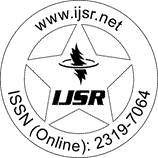Downloads: 1 | Views: 205 | Weekly Hits: ⮙1 | Monthly Hits: ⮙1
Informative Article | Physics | Indonesia | Volume 12 Issue 1, January 2023 | Popularity: 4.9 / 10
Basics of Semiconductors
J. M. Kalyani
Abstract: A semiconductor has conductivity between that of a conductor and an insulator. These are less conductive than metals, but differ from metals in that, as a semiconductor heats up, its conductivity rises. In metals the opposite effect occurs. The reason for this is, in a semiconductor, very few atoms are ionised, and so very few electrons can move, creating an electric an electric current. However, as the semiconductor heats up, the covalent bonds (atoms sharing electrons, causing the electrons to be relatively immobile) breakdown freeing the electrons. As a result, a semiconductor?s conductivity rises at an increasing rate as temperature rises. Examples of semiconductors include silicon and germanium. At room temperature, silicon has a conductivity about435usm-1. Semiconductors are usually doped. This means that ions are added in small quantities, giving the semiconductor a greater or lesser number of free electrons as required. This is controlled by the charge on the ions. A semiconductor material has an electrical conductivity value falling between that of a conductor such as metallic copper and an insulator such as glass. Its resistance falls as its temperature rises; metals are the opposite. Its conducting properties may be altered.
Keywords: Semiconductors, Resistivity, P Type, N Type-Transistors
Edition: Volume 12 Issue 1, January 2023
Pages: 412 - 414
DOI: https://www.doi.org/10.21275/SR23108155624
Make Sure to Disable the Pop-Up Blocker of Web Browser
Similar Articles
Downloads: 57
Research Paper, Physics, India, Volume 9 Issue 11, November 2020
Pages: 606 - 613Chronological Records and Development in the Field of Spintronics
M. Kumari, J. N. Prasad
Downloads: 137 | Weekly Hits: ⮙2 | Monthly Hits: ⮙2
Research Paper, Physics, India, Volume 2 Issue 9, September 2013
Pages: 181 - 184Heat Mass Transfer and Thermophysical Analysis for Pyramid Type Solar Still
S. Kalaivani, S. Rugmini Radhakrishnan
